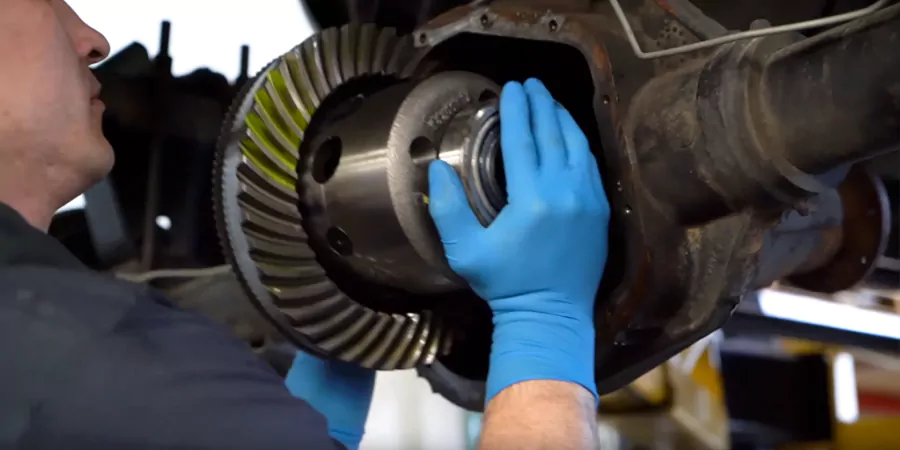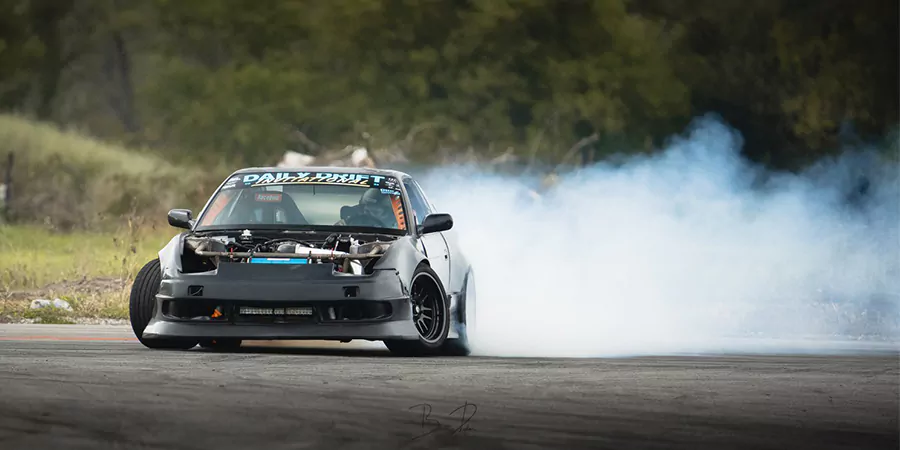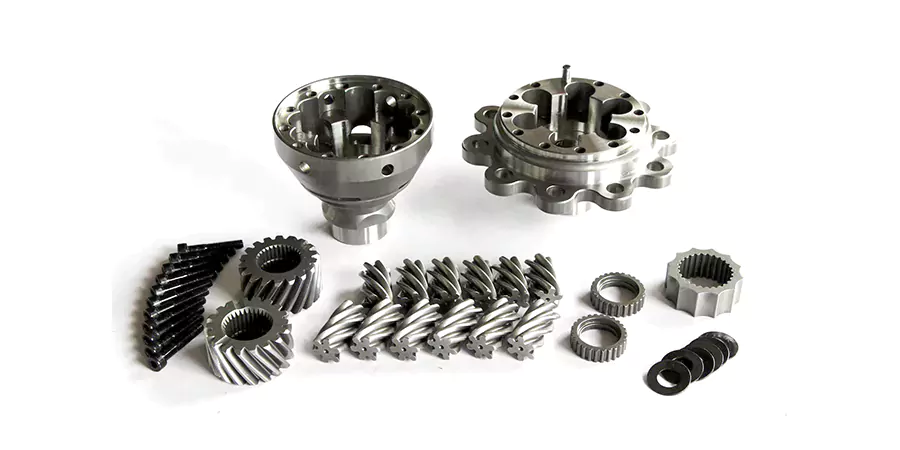What is a Differential?

The differential is a key component of a rear-wheel drive car, transferring power from the driveshaft to the wheels. This allows the wheels to turn at different speeds as needed when turning. Most rear-wheel drive cars are equipped with an open differential, which allows the rear wheels to rotate independently of each other. This provides a comfortable ride in everyday driving, but can reduce traction in certain situations.
Common Differential types
Differential types can be roughly divided into three categories: those that completely lock the axles, those that allow a certain amount of slip, and computer-controlled differentials. The former includes welded, locking differentials, while the second includes vLSDs, clutched LSDs, and Torsen/helical differentials. The third is represented by torque vectoring differentials.
A limited-slip differential (LSD) connects the two wheels together, preventing one wheel from spinning faster than the other. This helps the car move forward even if one wheel has less traction than the other.
Open Differentials for Drifting?

An open differential is a simple and affordable option.
However, the biggest downside to open differentials is that, as the name implies, they are open. When torque is applied, the force tends to go through the path of least resistance, which means the wheel with less grip will get more power. This isn’t a problem in everyday driving, since power rarely needs to be applied to either wheel. But on a racetrack, drag strip, or drift course, this can become a hindrance. If one wheel starts to slip, all the acceleration is gone because all the power is diverted away from the wheel with more grip.
Imagine a car drifting through a corner. Due to centrifugal force and the shift of the vehicle’s center of gravity, the outer wheels bear more weight and load, and can better maintain grip; while the pressure of the inner wheels in contact with the ground is reduced, the grip is reduced, and it is easier to lose traction, that is, idling.
In contrast, the working principle of LSD is that once the inner wheel starts to rotate, LSD will lock the differential and distribute power to the two tires, thereby achieving controlled sliding and preventing the inner wheel from losing traction and causing the vehicle to lose control.
Torsen LSD for Drifting?
Drifting into a turn usually doesn’t require an LSD, as the car can be slowed down by braking, handbrake or friction. Without an LSD, mid-cornering is more difficult, as the unloaded tires will spin, preventing acceleration. But with a locking differential, mid-cornering and exiting the turn is much easier. The more throttle you put on, the greater the drift angle, which can be corrected by steering.

But, the best choice for drifting is a mechanical LSD (clutched LSDs, and Torsen LSDs), which are used by most professional and advanced amateur drivers. A cheaper alternative is a welded differential, but it has disadvantages, such as increased wear, increased noise when turning hard, and durability issues. An open differential is fine for your daily driving.



